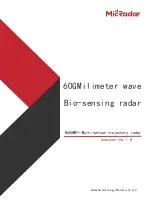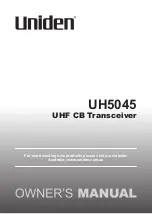
1. OPERATIONAL OVERVIEW
1-9
Course-up mode
The course-up mode is an azimuth stabilized dis-
play in which a line connecting the center with the
top of the display indicates own ship's intended
course (namely, own ship's previous heading just
before this mode has been selected).
Target pips are painted at their measured dis-
tances and in their directions relative to the
intended course, which is maintained at the 0-
degree position. The heading line moves in accor-
dance with ship's yawing and course change. This
mode is useful to avoid smearing of picture during
course change.
Head-up TB (True Bearing) mode
Radar echoes are shown in the same way as in the head-up mode. The difference from normal
head-up presentation lies in the orientation of the bearing scale. The bearing scale is heading
sensor stabilized. That is, it rotates in accordance with the heading sensor signal, enabling you to
know own ship's heading at a glance.
This mode is available when the radar is interfaced with a gyro heading sensor.
If the gyro heading sensor fails, the bearing scale returns to the state of head-up mode.
North-up mode
The north-up mode paints target pips at their measured dis-
tances and in their true (heading sensor) directions from own
ship, north bearing maintained at the top of the screen. The
heading line changes its direction according to the ship's
heading. Requires heading signal.
If the compass fails, the presentation mode changes to head-
up and the north marker disappears. Also, the HDG indication
shows ***.*. And the message “SIGNAL MISSING HEADING”
appears in red at the lower-right corner of the screen.
Heading Line
North Marker
Heading Line
North Marker
















































